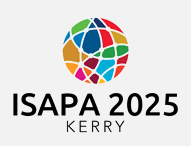Start Date
17-6-2025 12:30 PM
End Date
17-6-2025 2:00 PM
Abstract
Introduction Shared Physical Education (SPE) consists of an extracurricular and supplementary Physical Education afterschool program, based on principles such as cooperative learning, voluntarism and peer tutoring strategies. The research aimed to develop, implement, describe and evaluate a SPE program addressed to the inclusion of students with disabilities (SWD).
Methodology This is a field research characterized as a program evaluation study. Data collection was carried out in two municipal schools in a medium-sized city in the country side of the state of São Paulo – Brazil. The sample involved the participation of 16 SWD and 16 students without disabilities (SWOD) from middle school. The data collection instruments consisted of: completion of measurement scales by the students; systematic observation recorded by the researcher in a field diary; pre and post-intervention semi-structured interviews with the students.
Results Data processing was based on thematic analysis. It was observed that, in both schools, the SWOD had initial difficulty in providing the necessary assistance to the SWD, due to: lack of proximity between the students; configuration of the class structure and settings; and shyness in exposing themselves. Throughout the interventions, the rapport between the students increased: SWOD began to offer the types of support in a more natural and appropriate way, while the SWD began to request less assistance to carry out the activities.
Conclusions It was found that the SPE program intensified social skills and promoted positive transformations in interpersonal relationships, bringing benefits to the development and learning of all students, proving to be a promising inclusion strategy.
References Block, M.,Oberweiser, B., & Bain, M. (1995). Using classwide peer tutoring to facilitate inclusion of students with disabilities in regular physical education. Physical Educator, 52, 47-56.
Klavina, A., & Block, M. E. (2008). The Effect of Peer Tutoring on Interaction Behaviors in Inclusive Physical Education. Adapted Physical Activity Quarterly, 25, 132-158.
Ward, P., & Ayvazo, S. (2006). Classwide Peer Tutoring inPhysical Education: Assessing Its Effects With Kindergartners With Autism. Adapted Physical Activity Quarterly, 23, 233-244.
Recommended Citation
van Munster, Mey and Gatti, Melina Radaelli, "Shared physical education program: cooperative learning and inclusion of students with disabilities" (2025). International Symposium of Adapted Physical Activity and International Symposium on Physical Activity and Visual Impairment and Deafblindness. 49.
https://sword.cit.ie/isapa/2025/day2/49
Shared physical education program: cooperative learning and inclusion of students with disabilities
Introduction Shared Physical Education (SPE) consists of an extracurricular and supplementary Physical Education afterschool program, based on principles such as cooperative learning, voluntarism and peer tutoring strategies. The research aimed to develop, implement, describe and evaluate a SPE program addressed to the inclusion of students with disabilities (SWD).
Methodology This is a field research characterized as a program evaluation study. Data collection was carried out in two municipal schools in a medium-sized city in the country side of the state of São Paulo – Brazil. The sample involved the participation of 16 SWD and 16 students without disabilities (SWOD) from middle school. The data collection instruments consisted of: completion of measurement scales by the students; systematic observation recorded by the researcher in a field diary; pre and post-intervention semi-structured interviews with the students.
Results Data processing was based on thematic analysis. It was observed that, in both schools, the SWOD had initial difficulty in providing the necessary assistance to the SWD, due to: lack of proximity between the students; configuration of the class structure and settings; and shyness in exposing themselves. Throughout the interventions, the rapport between the students increased: SWOD began to offer the types of support in a more natural and appropriate way, while the SWD began to request less assistance to carry out the activities.
Conclusions It was found that the SPE program intensified social skills and promoted positive transformations in interpersonal relationships, bringing benefits to the development and learning of all students, proving to be a promising inclusion strategy.
References Block, M.,Oberweiser, B., & Bain, M. (1995). Using classwide peer tutoring to facilitate inclusion of students with disabilities in regular physical education. Physical Educator, 52, 47-56.
Klavina, A., & Block, M. E. (2008). The Effect of Peer Tutoring on Interaction Behaviors in Inclusive Physical Education. Adapted Physical Activity Quarterly, 25, 132-158.
Ward, P., & Ayvazo, S. (2006). Classwide Peer Tutoring inPhysical Education: Assessing Its Effects With Kindergartners With Autism. Adapted Physical Activity Quarterly, 23, 233-244.


